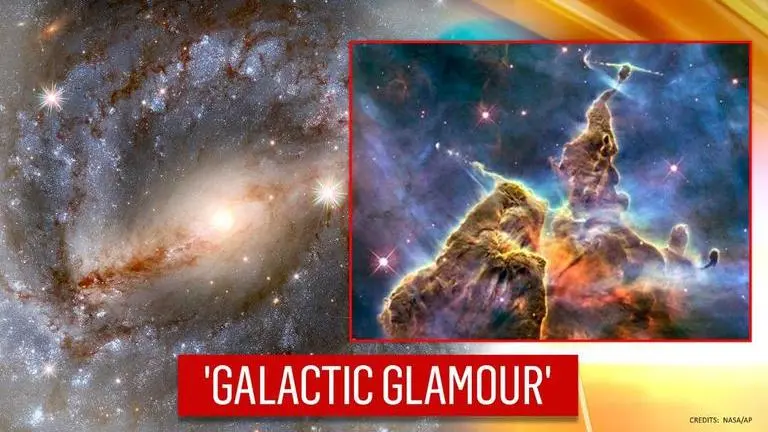Updated 3 October 2020 at 19:14 IST
'Looking this good...': NASA's Hubble captures spectacular image of nearby galaxy
NASA, October 2, shared a spectacular photograph of NGC 5643, a galaxy which is a part of Lupus. The image of the spiral galaxy was captured by Hubble.
- Science News
- 2 min read

NASA, October 2, shared a spectacular photograph of NGC 5643, a galaxy which is a part of constellation Lupus. The image of the spiral galaxy was captured by the agency’s Hubble Space Telescope and it took a total of nine hours for scientists to click the image. “Looking this good isn’t easy; 30 different exposures, for a total of nine hours of observation time, together with the high resolution and clarity of Hubble, were needed to produce an image of such high level of detail and beauty,” the ESA which jointly owns Hubble with NASA wrote on its website.
#HubbleFriday Looking this good isn’t easy.
— Hubble (@NASAHubble) October 2, 2020
Capturing this Hubble image of the galaxy NGC 5643 took 30 different exposures and nine hours of observation time! This beautiful galaxy is about 60 million light-years away in the constellation Lupus: https://t.co/LaYGOTP6ZK pic.twitter.com/VBFVejyHrj
Recent supernova event
The "beautiful” NGC 5643 is about 60 million light-years away from the planet earth in the constellation Lupus. It has been the host of a recent supernova event, which cannot be seen in the image. As per the European Space Agency (ESA), the supernova (2017cbv) was a specific type in which a “white dwarf steals so much mass from a companion star” that it becomes unstable and explodes. “The explosion releases significant amounts of energy and lights up that part of the galaxy,” NASA explained.
Advertisement
Last months, NASA shared another rare photo of the globular cluster NGC 1805, located near the edge of the Large Magellanic Cloud. Taking to its official Instagram handle, NASA shared the mystic photo of the tight cluster of thousands of stars located near the satellite of the Milky Way galaxy, captured by NASA/ESA Hubble Space Telescope. “In its center, thousands of stars are packed 100 to 1,000 times closer to one another than the nearest stars are to our Sun,” NASA explained in the caption of the post. “The striking difference in star colours is illustrated in the image, which combines different types of light: blue stars, shining brightest in near-ultraviolet light, and red stars, illuminated in red and near-infrared,” it added.
Advertisement
Published By : Riya Baibhawi
Published On: 3 October 2020 at 19:14 IST
